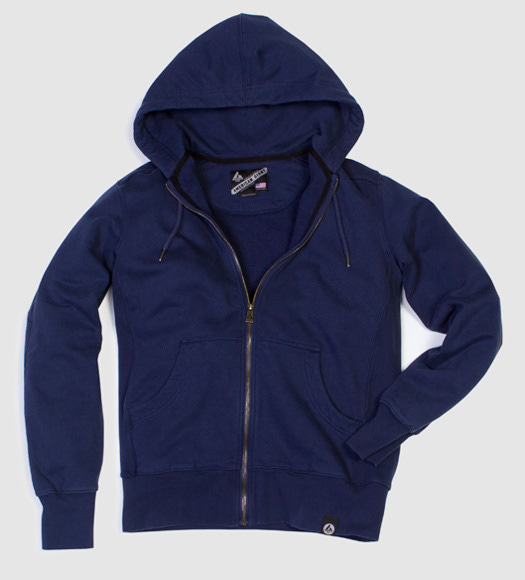RESEND: So What, Who Cares (vol 2, issue 27) How the Internet is redefining brand name clothing
Hello! If today's newsletter is light, it's because I'm coming off a weekend in which we learned that the family that is stricken with a horrible stomach flu together is the family that ... well, drinks a lot of Gatorade. Let's focus on the positive. What are your go-to sick-day remedies? Tender all suggestions via twitter or email.
*
To follow up on the National Parks news from issue 2, volume 26, reader Aaron writes:
California is lousy with national parks, but we've got a few too. Ours are of the historical sort, though, and don't think history isn't important to fourth graders. In our book alone we've got the George Washington Carver National Monument, Brown v. Board of Education National Historic Site, Nicodemus National Historic Site, Harry S. Truman NHS and the Truman Farm, in addition to several outstanding Kansas and Missouri state parks like the new Island Mound, whose spare appearance belies the fact that it was the first place anywhere that black soldiers fought and died for their freedom in the Civil War.
So -- handy reminder: Parks are not just for living out your Outside magazine dreams. They're also for making history feel immediate and relevant to kids.
And for more on historic parks -- especially the ones Aaron referenced -- please check out The Big Divide: A Travel Guide to Historic and Civil War Sites in the Missouri-Kansas Border Region (available in both print and Kindle editions).
*
A continuing story in retail: Where and how your clothing is made is just as important as how nice it looks or whether it's au courant. This story gained momentum last fall with shoppers (vol 1, issue 24), and now there's a new angle to explore: What business opportunities will emerge to meet the demand of the shopper who wants the origin story for the cotton in their hoodies. American Giant is currently working with cotton producers throughout the American south to make a better sweatshirt, and they credit the Internet with making a made-in-America sweatshirt into a booming business:
The Internet doesn’t just offer a sales-and-distribution platform, Winthrop argues, but the opportunity to forge fresh relationships between brands and consumers. He says successful brands of the future will be "humanizers," who instead of growth put "love at their core," a concept he illustrates in his book with a big pink heart.
So what? What is interesting about American Giant's approach is how it echoes the "Do less but do it well" ethos that's rippling across consumer goods markets. It's been noted that a lot of midmarket retail's hottest names at the moment -- like Everlane -- are excelling precisely because they offer only a few items (vol 2, issue 16) and that makes things easy on consumers.

In a way, this shift in clothing strategy is not unlike the shift that rocked Apple back in 1998 when Steve Jobs rolled out the product grid and turned Apple' myriad product lines into a vastly simplified business that had only four distinct purposes. The grid made things easier for both producers (Apple) and consumers.
Who cares? Big retailers should. The allure they used to have -- you can buy an entire outfit in one place! Without leaving the store! -- is not what the American public is into these days, for a few reasons. First, there's a growing body of evidence that the paradox of choice is a real thing and that shoppers shut down when faced with too many decisions in one store. Second, Americans are inveterate bargain-hunters, and so do not have an issue with going to ten places for ten separate things. Right now, small retailers are offering a streamlined shopping experience with the bonus perk of feeling good about shopping.
It will be interesting to see if the bigger chains who have made their bones in fast fashion (vol 1, issue 7) respond with high-profile looks at their own production chain, or if they roll out a boutique line of ethically-sourced stuff as a way to capture the shopper-with-a-conscience moment.
*
Today's moment in pop culture: Parks and Rec is ending on Tuesday night and while the Internet has given us an abundance of listicles and commentary devoted to extolling the virtues of Pawnee and its inhabitants, the one worth reading, in my opinion, is this tribute to Jerry/Terry/Larry/Garry Gergich, which ends with this beautiful tribute:
He may be the butt of all of his co-workers’ jokes, but his strength lies in the fact that his work life is a mere distraction from the life that really matters to him, the life where he is swift and golden, catching cups. It’s in this way, too, that Garry is the anti-millennial, the anti-21st-century American. He has created for himself a life separate from the corporate grind. It is the least hip way to form a life for yourself in 2015, but his aw shucks happiness and unstoppable geniality is everything any non-striver could hope for from life.
Here's to the least hip, most content man on TV.
*
Did you miss an issue of So What, Who Cares? The archive is here. Are there typos? I apologize in advance.
As always, I welcome your feedback and suggestions -- you can reach me through Twitter or email. Please do not hesitate to let me know what you think about So What, Who Cares, or suggest links/topics/pop culture that rings your bell.
If you really like it, tell a friend to subscribe.


